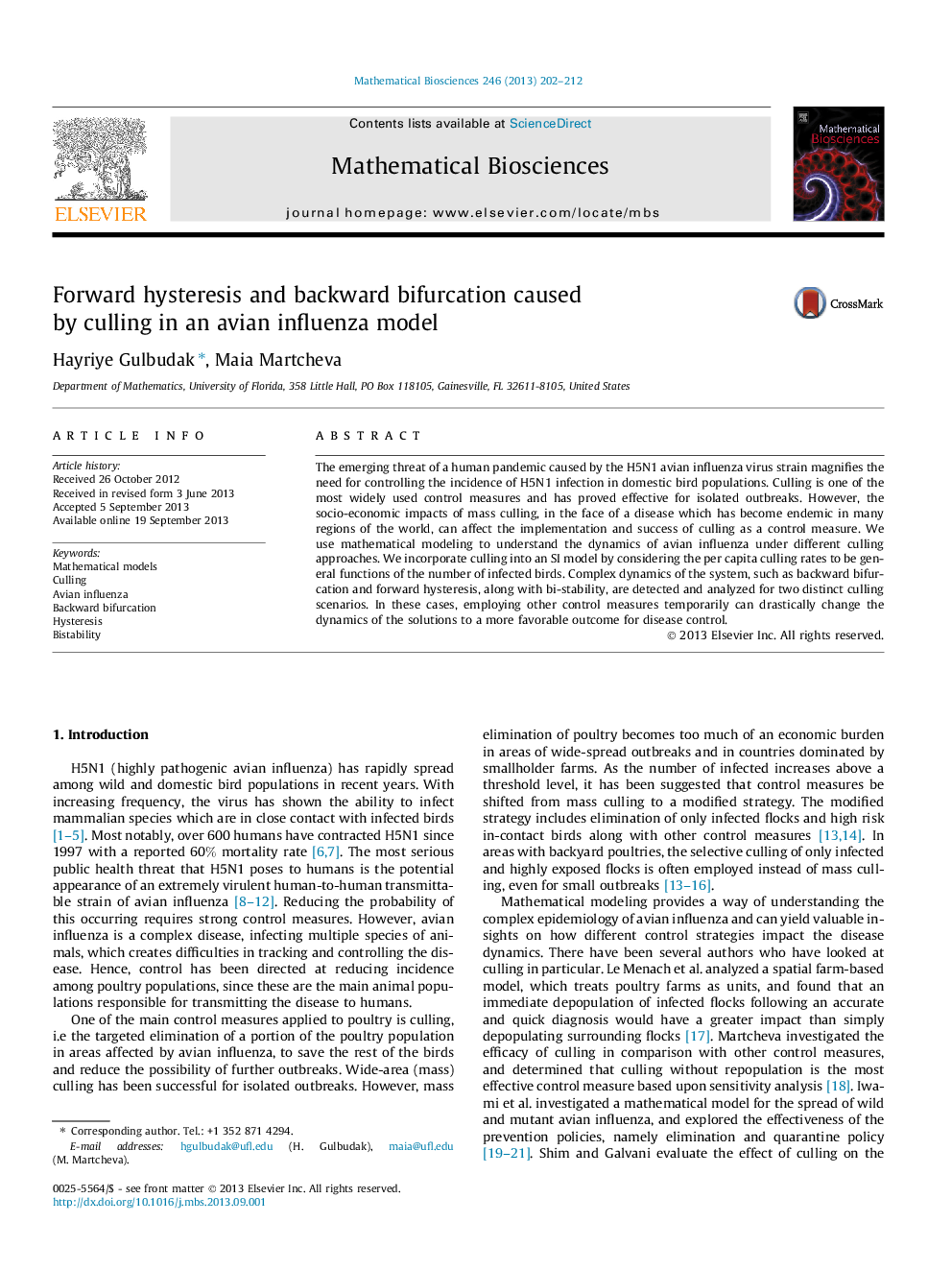| کد مقاله | کد نشریه | سال انتشار | مقاله انگلیسی | نسخه تمام متن |
|---|---|---|---|---|
| 4500162 | 1319962 | 2013 | 11 صفحه PDF | دانلود رایگان |

• We incorporate various culling rate functions into an SI model of avian flu.
• For certain culling rates in our model, we find bistable dynamics.
• Temporary control measures can drastically change the equilibrium number of infected.
The emerging threat of a human pandemic caused by the H5N1 avian influenza virus strain magnifies the need for controlling the incidence of H5N1 infection in domestic bird populations. Culling is one of the most widely used control measures and has proved effective for isolated outbreaks. However, the socio-economic impacts of mass culling, in the face of a disease which has become endemic in many regions of the world, can affect the implementation and success of culling as a control measure. We use mathematical modeling to understand the dynamics of avian influenza under different culling approaches. We incorporate culling into an SI model by considering the per capita culling rates to be general functions of the number of infected birds. Complex dynamics of the system, such as backward bifurcation and forward hysteresis, along with bi-stability, are detected and analyzed for two distinct culling scenarios. In these cases, employing other control measures temporarily can drastically change the dynamics of the solutions to a more favorable outcome for disease control.
Journal: Mathematical Biosciences - Volume 246, Issue 1, November 2013, Pages 202–212